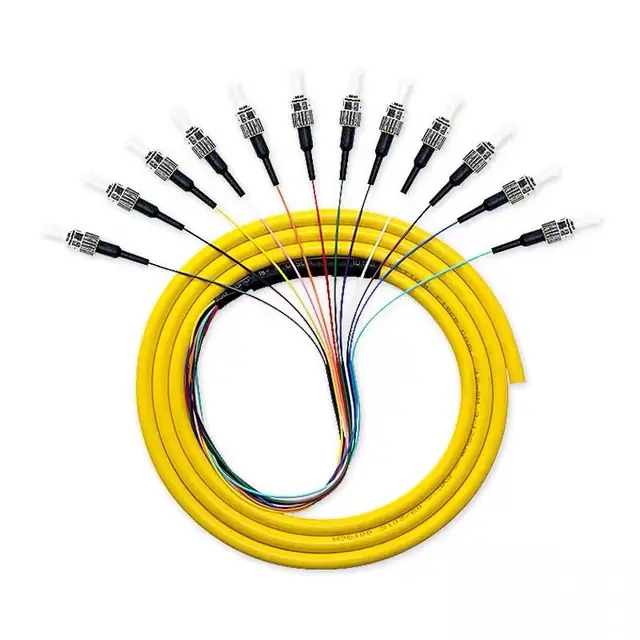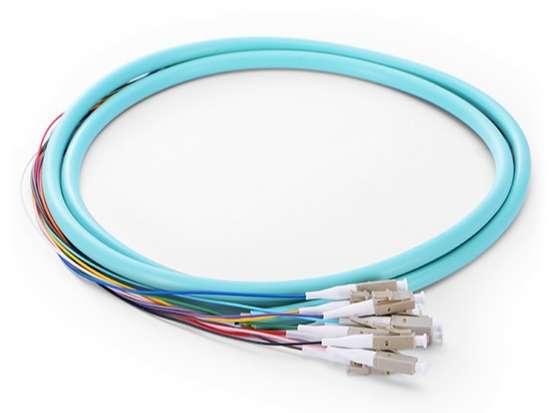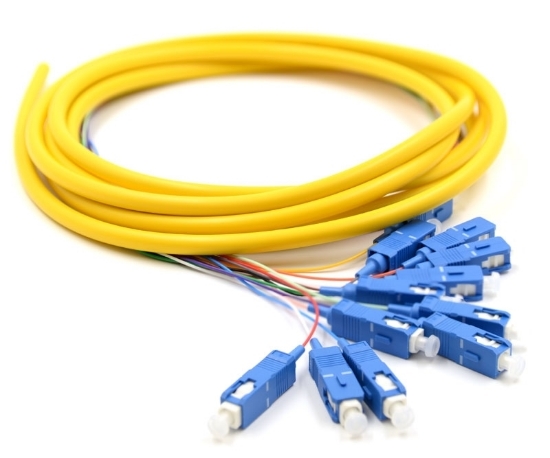Exploring Fiber Optic Network Components: FTTX Fiber Pigtail and Connectors
Understanding Fiber Optic Networks
Fiber optic networks are integral to modern connectivity, with FTTX fiber pigtails serving as essential components. These pigtails play a crucial role in facilitating seamless operations by connecting optical fibers to other network devices. Understanding the significance of fiber optic pigtails is vital for maintaining an efficient and reliable network infrastructure. The integration of FTTX fiber connectors further enhances the functionality of these networks, ensuring smooth data transmission and network reliability.
Importance of FTTX Fiber Pigtai
FTTX fiber pigtails play a critical role in ensuring the seamless connectivity and reliability of fiber optic networks. These essential components are specifically designed to facilitate the connection between optical fibers and network devices, enabling smooth data transmission and efficient network operations.
Role in Network Connectivity
FTTX fiber pigtails serve as vital links in connecting optical fibers to various network devices, such as switches, routers, and other equipment.
By providing a secure and stable connection, these pigtails ensure that data is transmitted seamlessly across the network infrastructure, contributing to overall network reliability.
Integration with Termination Boxes
The integration of FTTX fiber pigtails with termination boxes is crucial for establishing a secure and efficient connection.
Proper integration ensures optimal network performance by minimizing signal loss and maintaining the integrity of data transmission throughout the network.
Fiber Optic Connectors and Splicing
Fiber optic networks rely on a variety of connectors to ensure efficient data transmission and connectivity. These networks utilize different types of connectors, including SC, LC, and ST, each with specific purposes and unique features.
Types of Fiber Optic Connectors
SC connectors, known as Subscriber Connectors or Standard Connectors, are widely used in fiber optic networks for their simple push-pull latching mechanism and high packing density.
LC connectors, standing for Lucent Connectors or Local Connectors, are popular due to their small form factor and reliable performance in high-density applications.
ST connectors, or Straight Tip connectors, are commonly used in data communication applications and provide a twist-lock bayonet coupling for secure connections.
Splicing techniques are essential for joining optical fibers within the network infrastructure. Proper splicing ensures seamless data transmission by minimizing signal loss and maintaining optimal network performance.
Importance of Splicing Techniques
Splicing techniques play a crucial role in maintaining the integrity of fiber optic networks. By securely joining optical fibers, these techniques contribute to the overall reliability and efficiency of data transmission across the network infrastructure.
Incorporating these splicing techniques enhances network performance by minimizing signal loss and ensuring seamless connectivity throughout the fiber optic network.
Significance of Optical Fiber Networks
Efficiency of Optical Fiber Networks
Optical fiber networks are known for their high-speed data transmission capabilities, making them essential for modern communication and data transfer requirements.
The low signal attenuation of optical fiber networks ensures that data can travel long distances without significant loss or degradation.
Reliability and Scalability
Optical fiber networks provide a reliable foundation for connectivity and can be easily scaled to meet growing demands.
The reliability of optical fiber networks makes them the backbone of modern telecommunications and internet infrastructure, supporting critical communication needs with minimal downtime.
Additionally, the scalability of these networks allows for seamless expansion to accommodate increasing data traffic and evolving connectivity requirements.
Role of FTTX Fiber Pigtai
FTTX fiber pigtails play a crucial role in maintaining seamless connectivity and ensuring reliable network operations. Understanding the functions and significance of these fiber optic pigtails is essential for upholding an efficient and dependable network infrastructure. The integration of fiber pigtails with connectors and splicing techniques is fundamental for the smooth operation of modern networks.
See Also
Exploring FTTH Network Deployment Benefits
The Impact of Fiber Optic Fast Connectors in FTTH Networks
The Impact of FTTH, FTTN, FTTC, and FTTP in Fiber Optic Solutions
Understanding Fiber Optic Technology: Explaining FTTH and Its Significance
About US
Follow Us
AnetFiber company's main products are indoor and outdoor optical fiber cables, outdoor waterproof pre-connected fiber-to-the-home products, PLC optical fiber splitters, optical fiber jumpers and pigtails, MTP®/MPO high-density big data product solutions, optical fiber field quick connectors and research and development molding, injection molding and production of optical fiber distribution boxes, optical fiber chassis cabinets, the market has expanded to the world, Europe, America, Asia, the Middle East and Latin America.
Address
Shenzhen City, Baoan District, Yanluo Street, Tangxiayong Community, Yangyong Industrial Road, Tonggangda New Energy Vehicle Park 406
Contacts
+86 199 2655 3586




